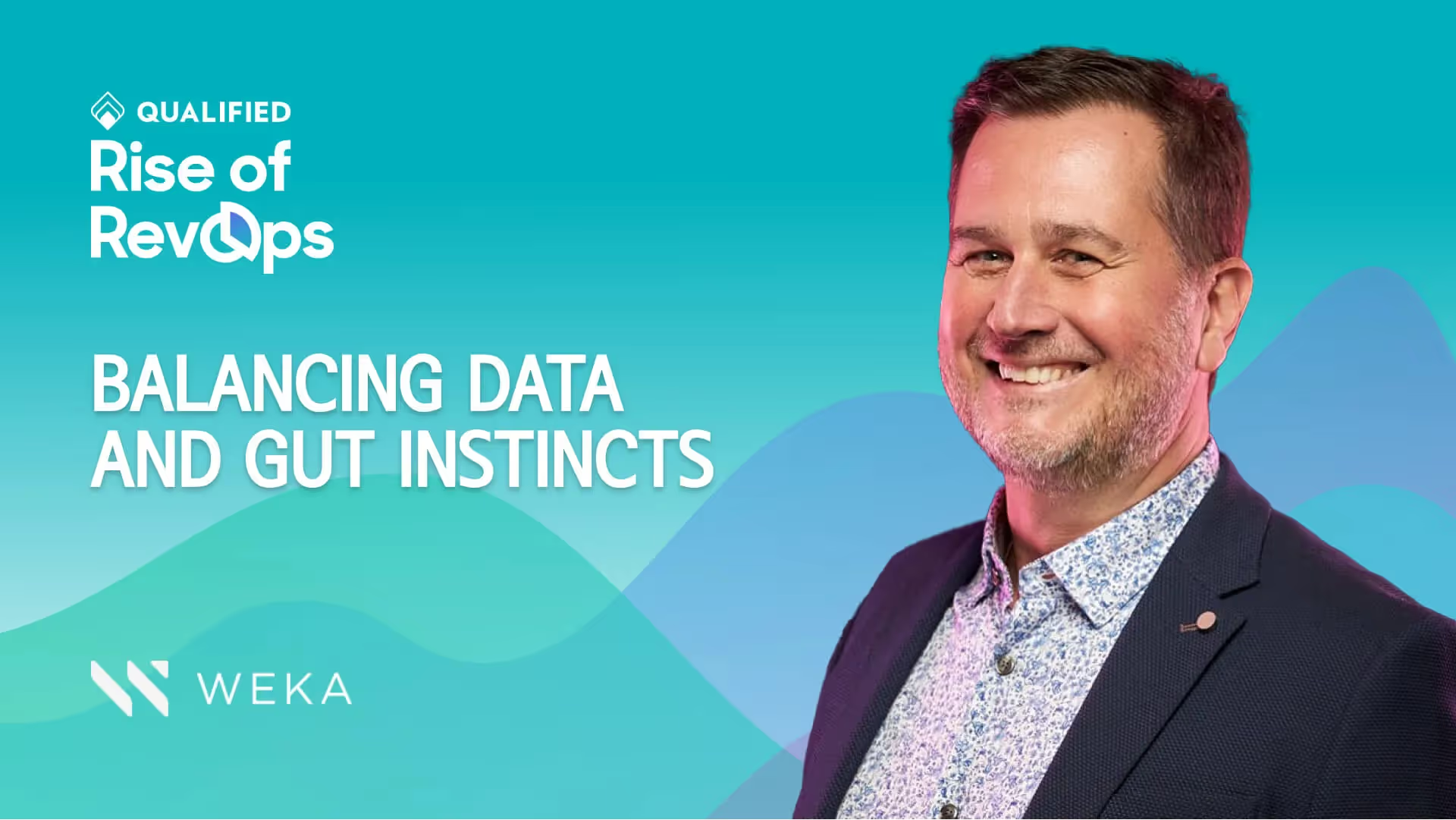Balancing Data and Gut Instincts
On this episode, Sean talks about prioritizing efficiently during growth, what he thinks are important qualities in GTM teams, and how he balances data driven decisions with gut instincts.




On this episode, Sean talks about prioritizing efficiently during growth, what he thinks are important qualities in GTM teams, and how he balances data driven decisions with gut instincts.

On this episode, Sean talks about prioritizing efficiently during growth, what he thinks are important qualities in GTM teams, and how he balances data driven decisions with gut instincts.
Key Takeaways
Stay up to date with weekly drops of fresh B2B marketing and sales content.
On this episode, Sean talks about prioritizing efficiently during growth, what he thinks are important qualities in GTM teams, and how he balances data driven decisions with gut instincts.


On this episode, Sean talks about prioritizing efficiently during growth, what he thinks are important qualities in GTM teams, and how he balances data driven decisions with gut instincts.
Key Takeaways
Stay up to date with weekly drops of fresh B2B marketing and sales content.
On this episode, Sean talks about prioritizing efficiently during growth, what he thinks are important qualities in GTM teams, and how he balances data driven decisions with gut instincts.


On this episode, Sean talks about prioritizing efficiently during growth, what he thinks are important qualities in GTM teams, and how he balances data driven decisions with gut instincts.
Key Takeaways
Stay up to date with weekly drops of fresh B2B marketing and sales content.
On this episode, Sean talks about prioritizing efficiently during growth, what he thinks are important qualities in GTM teams, and how he balances data driven decisions with gut instincts.



On this episode, Sean talks about prioritizing efficiently during growth, what he thinks are important qualities in GTM teams, and how he balances data driven decisions with gut instincts.
Key Takeaways
Discover how we can help you convert more prospects into pipeline–right from your website.